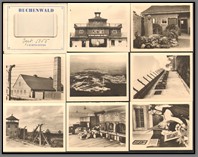World War 1 & 2
Collection of 830 World War 2 Italian POW letters from Italy (10), Egypt (96), Kenya (57), UK (114), India (97), South Africa (29), USA (94), Germany (248), Morocco (13), Tanganyika/Rhodesia (5), Algeria (44), Australia (22), Eritrea (1). Almost all are real letters and not simply notices of capture. Also included is a POW pay book belonging to Sebastiano Tineo, showing debits and credits to his account while a POW. m
Price: $9990.00






























